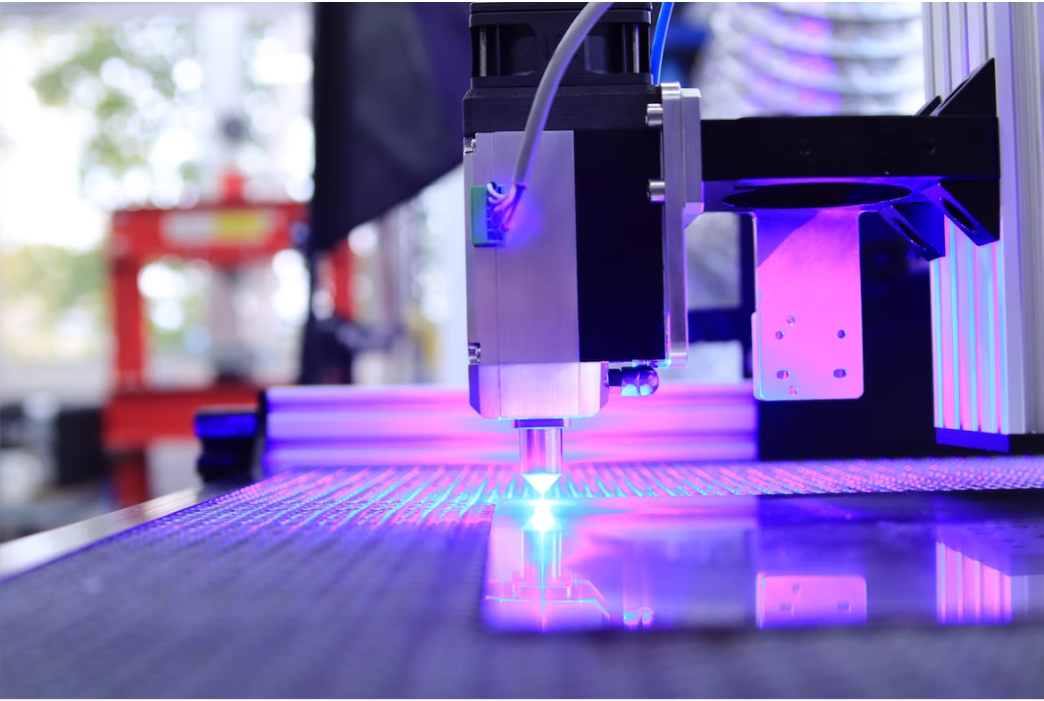 Author: Jasmine Burrows, Progressive Legal
Author: Jasmine Burrows, Progressive Legal

Admissibility of Evidence from Wayback Machine in Intellectual Property matters

In today’s digital age, the preservation of web content has become increasingly prevalent in the legal system. The World Wide Web is a place where information is constantly being created, modified, and removed.
As more professionals turn to this digital historical archive for evidentiary support, the admissibility of evidence from Wayback Machine has become a topic of interest and discussion. This article explains the current landscape surrounding the admissibility of Wayback Machine evidence in Australia.
What is Wayback Machine?
Wayback Machine was founded by the Internet Archive, a non-profit organisation based in San Francisco.
It’s an online tool that is widely used to access past versions of websites, and can be described as a digital time capsule that stores screenshots of websites periodically at various points in time. Its extensive archive provides legal practitioners with a valuable resource for retrieving evidence.
It uses web crawling technology to index and archive websites, allowing users to access past versions. Users navigate the archive by simply pasting a website’s current URL and choosing a date range to access a past version of the website.
This archival capability has led to Wayback Machine being used to collect evidence in legal cases globally.
Is evidence from Wayback Machine admissible?
Evidence from Wayback Machine can be admissible in legal proceedings, depending on the type of matter.
If you are involved in a matter concerning trade marks and patents before IP Australia, you can submit evidence from Wayback Machine. This is because the hearings of intellectual property matters before IP Australia are not subject to the strict rules of evidence in Australia.
If you are involved in a matter before Court, you have to be more careful about submitting Wayback Machine evidence. This is because its admissibility is governed by the Evidence Act 1995.
Is Wayback Machine evidence admissible in Intellectual Property Matters?
Given that IP Australia is not bound by the rules of evidence, Wayback Machine evidence is admissible to confirm the existence and content of a web page at a specific date. The use of Wayback Machine evidence can be very useful in intellectual property matters to establish:
- The exact date when a trade mark was first used;
- If the use of a trade mark has been continuous for over several years;
- The history of content on a website;
- Proof of past infringing use of copyrighted or trade marked content; and
- General knowledge about a patent at a certain point in time when assessing patent validity.
As a business owner, you may find it helpful to keep internal archive records of your websites. This will demonstrate the use of your trade marks over time in intellectual property disputes.
“Where the Wayback Machine reveals a document, I accept that it is prima facie evidence (though rebuttable) as to the existence of that document and the veracity of what it contains (including the date of the same).” – CSL Limited v Capital Securitisation (Holdings) Pty. Limited [2010] ATMO 42
Is Wayback Machine evidence admissible in Court Proceedings?
If proceedings are filed in Court, then the rules of evidence and hearsay apply. This complicates the admissibility of Wayback Machines evidence. Ultimately, Wayback Machine evidence has proven to be admissible in Australian Courts. Its admissibility is determined by authenticity, relevance, and reliability.
Case Law Example 1
Pinnacle Runway Pty Ltd v Triangl Limited [2019] FCA 1662
In the case of Pinnacle Runway Pty Ltd v Triangl Limited [2019] FCA 1662, Murphy J made a significant decision regarding the admissibility of evidence from the WayBack Machine in proceedings at the Federal Court of Australia.
Pinnacle Runway Pty Ltd is the owner of the trade mark DELPHINE in class 25 for clothing, headwear, and swimwear. Triangl sold in Australia a bikini style under the TRIANGL Trade Mark using the name DELPHINE, but denied using DELPHINE as a trade mark.
Triangl provided evidence from the WayBack Machine to support their argument that consumers in Australia were accustomed to seeing women’s names used as product names in women’s fashion. The evidence consisted of screenshots of webpages showing product names which were considered as ‘business records’ by Murphy J. This meant that the Wayback Machine evidence was admissible under the ‘business records’ exception.
Murphy J concluded that the WayBack Machine evidence would be considered hearsay under Section 59 if the archiving process involved human input. However, if the WayBack Machine archive was automatically compiled by a software program, the material would not be considered hearsay. Testimony from Mr. Butler, the office manager of WayBack Machine, provided evidence on how their software compiles the archive. Therefore, machine-generated material from the WayBack Machine, such as the screenshots in question, would not be considered representations made by a person and would not be classified as hearsay.
Case Law Example 2
Rodney Jane Racing Pty Ltd v Monster Energy Company [2019] FCA 923
In the case, Rodney Jane Racing Pty Ltd v Monster Energy Company [2019] FCA 923, the court considered the admissibility of online evidence. The evidence in question included:
- Internet searches using Wayback Machine;
- Internet searches using Facebook or Instagram posts;
- Internet results of catalogues;
- IP Australia search results;
- Google search results of the names of the owner/s of the trade mark registrations; and
- Google Analytics information.
In relation to Wayback Machine evidence, O’Bryan J held that archived web pages were not business records if they are merely promotional or descriptive of the activities of a company. His honour referred to the example of an ‘About Us’ page on a company’s website. It was concluded that the Internet searches that were provided as evidence were inadmissible because of their merely promotional and descriptive nature. On the other hand, the Google Analytics information that allowed businesses to track and record website traffic was admissible under the ‘business record’ exception in s 69 of the Evidence Act.
What should I consider when using Wayback Machine evidence in Court?
Courts have evaluated the authenticity, relevance, and reliability of evidence when determining its admissibility.
In recent cases (see below), the courts have been increasingly accommodating of the use of this technology. A key factor underlying this is parties providing clear evidence on how Wayback Machine operates.
Authenticity
The first criterion for the admissibility of Wayback Machine evidence is its authenticity. Courts must be satisfied that the evidence accurately represents the website as it appeared during the relevant time period. The Internet Archive’s reputation as a trusted digital preservation organisation lends credibility to the evidence, but additional steps have shown to be necessary to validate its authenticity.
In the case of Home Grown Brands Australia Pty Ltd v Sperling Enterprises Pty Ltd [2021] FCCA 1597, the Respondent was accused of engaging in misleading or deceptive conduct by selling surfboards that were distinctively similar to the Applicant’s. According to Manousaridis J, ‘authenticity’ refers to a document or item that matches a party’s claim. His Honour also stated that ‘authentication’ is the process by which the party convinces the Court of its validity.
In this instance, the Respondent provided Wayback Machine evidence of screenshots that captured the specific websites as they appeared on the specified dates. These screenshots displayed information about the surfboards in question and related details. Additional information in support of the authenticity of Wayback Machine was also provided as evidence.
Manousaridis J referred to s 144(1) of the Evidence Act 1995 (Cth) in deciding that the screenshots found on the Wayback Machine is ‘knowledge that is not reasonably open to question.’ It was decided that the documents were authentic and could be relied upon as accepted evidence. Thus, Wayback Machine evidence can be admissible if it is authentic.
Relevance
The second criterion for Wayback Machine evidence is its relevance to the case at hand. Legal practitioners need to establish the significance and probative value of the Wayback Machine evidence. It should be directly related to the matter under consideration and contribute to the establishment of facts or the resolution of a dispute.
In Home Grown Brands Australia Pty Ltd v Sperling Enterprises Pty Ltd [2021] FCCA 1597, Manousaridis J explored the relevance of Wayback Machine documents. In reference to a previous judgment by Wilcox J in Re Mark Lyons Pty Limited v Bursill Sportsgear Pty Limited [1987] FCA 282, Manousaridis J reaffirmed that the documents were relevant as they provided evidence of the behaviour of individuals in the specific industry. This evidence was deemed important in determining the dimensions of the relevant market.
Essentially, the information from the documents enabled the Court to discern the Respondent’s target market at the time of posting certain goods on their website. By examining the archived content, one could gain insights into the customer base the Respondent had in mind. This helped the court assess the Respondent’s engagement with misleading or deceptive conduct.
Manousardis J ultimately decided that the Wayback Machine documents were relevant to the matter. Thus, Wayback Machine evidence can be admissible if it is relevant to the case at hand.
Reliability
The final criterion for the admissibility of evidence from the Wayback Machine is its reliability. If you are seeking to rely on evidence from Wayback Machine, you should ensure that the material is not relied on in isolation and that you provide additional information that supports its accuracy. This could include expert opinions, declarations, or corroborating evidence from individuals involved in website maintenance.
In the case Dyno Nobel Inc v Orica Explosives Technology Pty Ltd (No 2) [2019] FCA 1552, Burley J and Murphy J agreed that Wayback Machine is indeed a trustworthy source for online content that existed at particular periods of time. The case found that there was evidence that supported the accuracy of the Wayback Machine documents. It was noted that the purpose of the evidence was to prove that the websites were once available, not to verify any information from the webpages. Thus, Wayback Machine evidence can be admissible if it is reliable.
Key Takeaways
Wayback Machine evidence is considered admissible in intellectual property matters in Australia.
It is important to assess the authenticity, reliability, and relevance of Wayback Machine evidence when considering its admissibility.
If you have further questions on the admissibility of Wayback Machine evidence, do not hesitate to contact our team at Progressive Legal. All you have to do is fill out the contact form on this page or contact our office at 1800 820 083.
Need Trade Mark Help?
Please get in touch with us today via phone or the contact form on this page.


